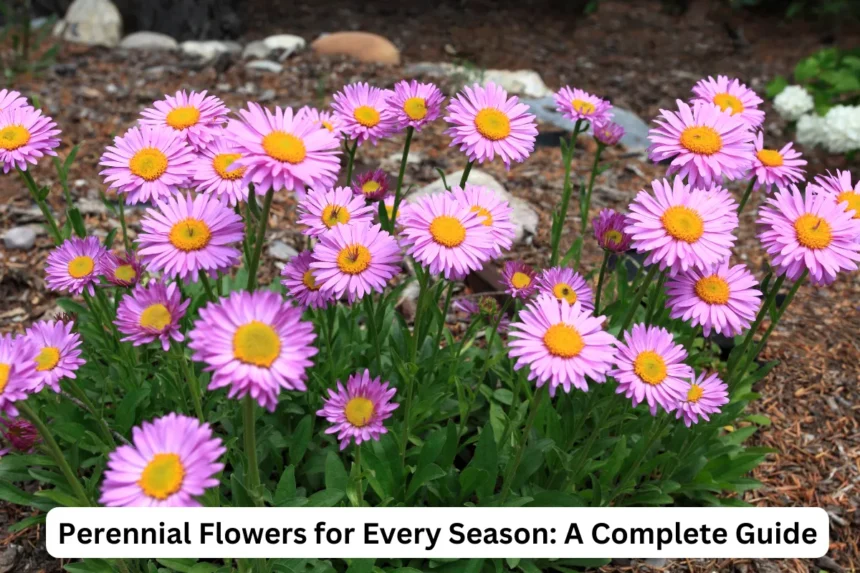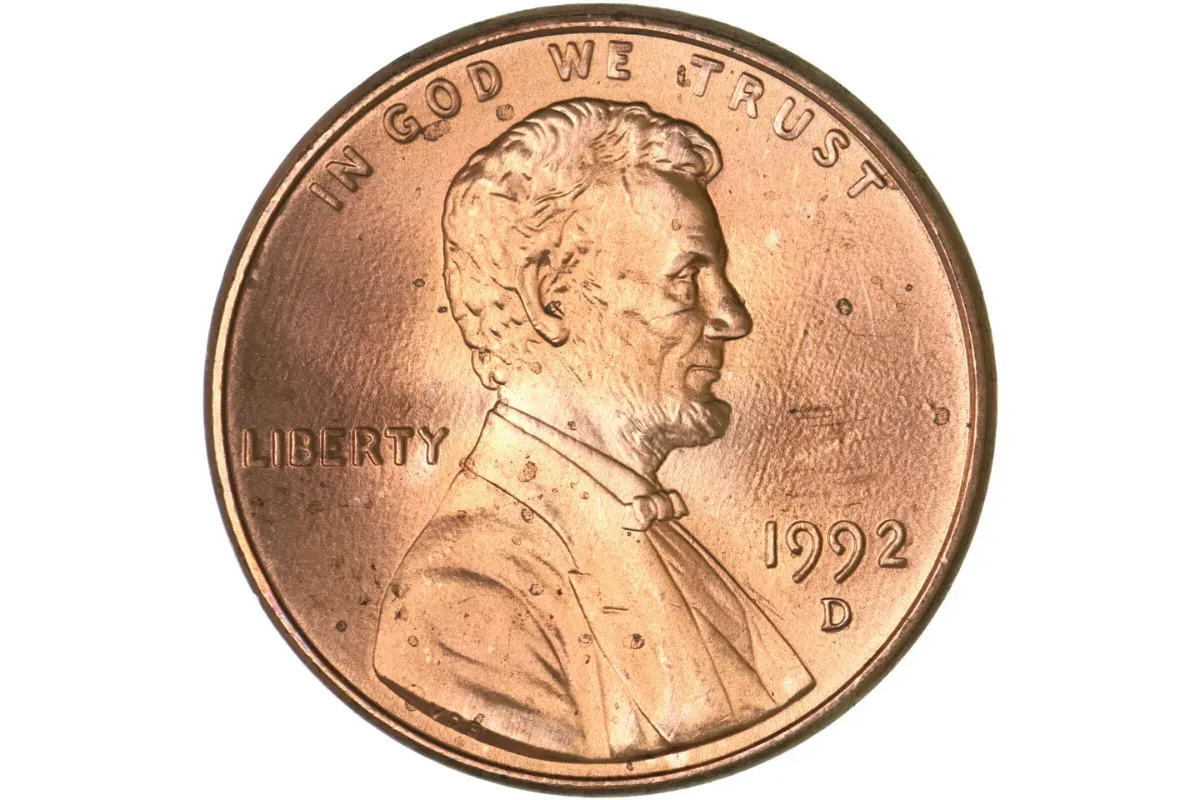Perennial flowers are a gardener’s delight, offering year-round color, structure, and texture to landscapes with minimal effort.
Unlike annuals that need replanting each year, perennials return reliably, making them an excellent investment for your garden.
This guide will help you choose and care for perennial flowers that bloom in different seasons, ensuring your garden remains vibrant all year long.
Understanding Perennials
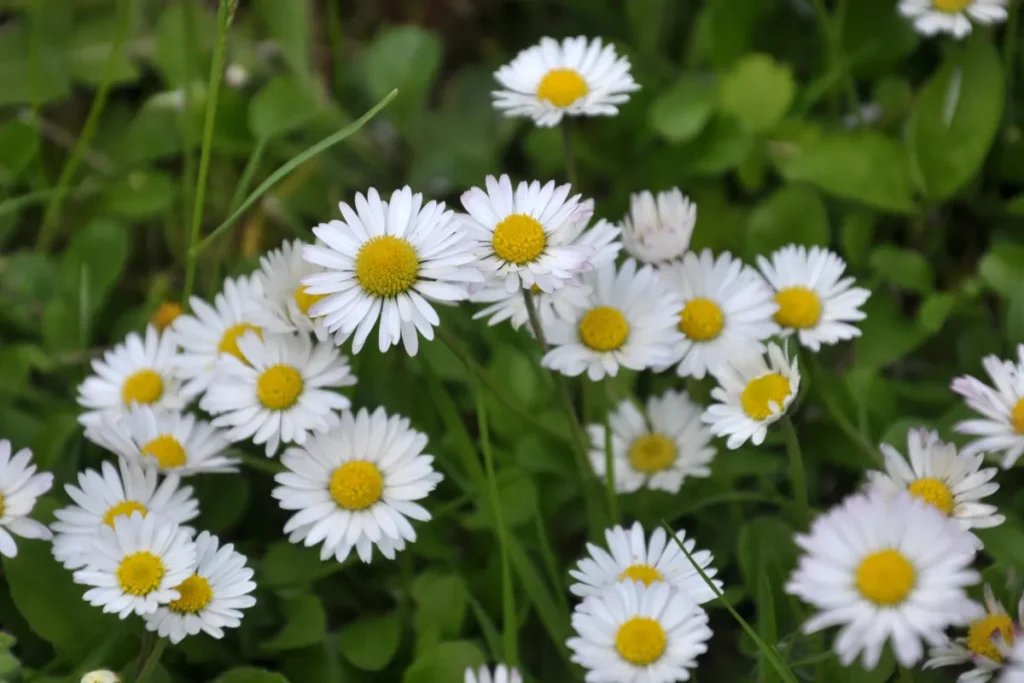
Perennials are plants that live for more than two years.
They typically have a period of active growth and bloom, followed by a period of dormancy.
This cycle repeats annually, with some perennials living for decades.
These plants can be herbaceous, dying back to the ground in winter, or woody, maintaining their above-ground structure year-round.
Spring-Blooming Perennials
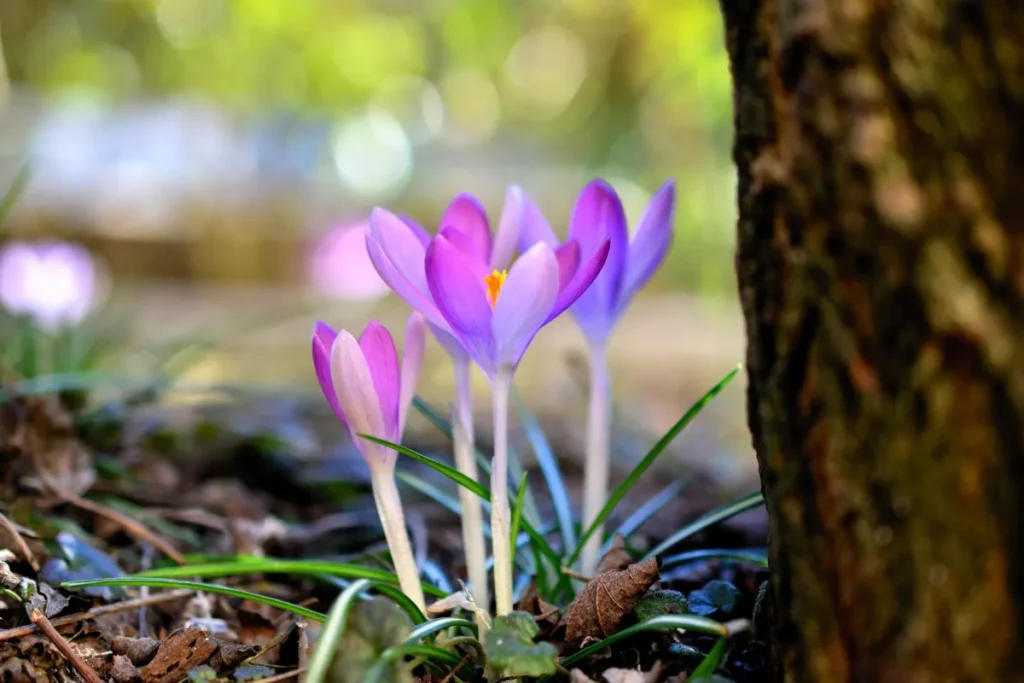
Spring is a time of renewal, and the garden comes alive with vibrant colors and fresh blooms.
Here are some top choices for spring-blooming perennials:
Tulips (Tulipa)
Tulips are classic spring favorites known for their bright, cup-shaped flowers.
They come in various colors, including red, yellow, pink, and white.
Plant tulip bulbs in the fall for a stunning spring display.
Daffodils (Narcissus)
Daffodils are cheerful flowers that symbolize spring.
They feature trumpet-shaped blooms in shades of yellow, white, and orange.
Like tulips, daffodil bulbs should be planted in the fall.
Primroses (Primula)
Primroses offer early spring color with their vibrant and diverse blooms.
They thrive in moist, well-drained soil and partial shade, making them ideal for woodland gardens.
Bleeding Heart (Dicentra)
Bleeding Hearts are known for their unique, heart-shaped flowers that dangle from arching stems.
They prefer shady spots with rich, well-drained soil and add a touch of romance to any garden.
Creeping Phlox (Phlox subulata)
Creeping Phlox forms a colorful ground cover in shades of pink, purple, blue, and white.
It’s perfect for rock gardens, slopes, or as an edging plant.
Summer-Blooming Perennials
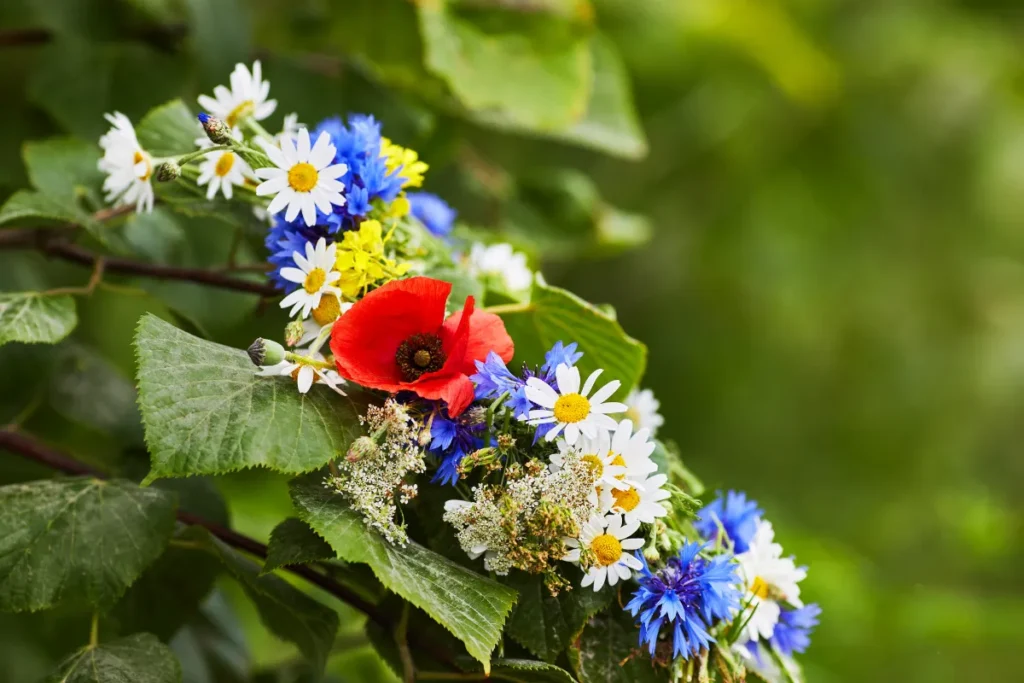
Summer gardens are a riot of color, with many perennials reaching their peak during the warmer months.
Here are some top picks for summer blooms:
Daylilies (Hemerocallis)
Daylilies are hardy and versatile, producing a wide range of colors and forms. Each bloom lasts for just one day, but the plants produce a profusion of flowers over several weeks.
Coneflowers (Echinacea)
Coneflowers are beloved for their daisy-like blooms with raised centers. They come in various colors, including purple, pink, white, and orange. Coneflowers are drought-tolerant and attract pollinators.
Black-Eyed Susans (Rudbeckia)
Black-Eyed Susans feature bright yellow petals with dark centers, adding a sunny disposition to the garden. They are tough plants that thrive in various conditions, making them a reliable choice.
Shasta Daisies (Leucanthemum x superbum)
Shasta Daisies are classic perennials with white petals and yellow centers. They bloom profusely in the summer and are perfect for cutting gardens and borders.
Lavender (Lavandula)
Lavender is known for its fragrant, purple spikes and silvery foliage.
It prefers well-drained soil and full sun, making it ideal for dry, sunny spots in the garden.
Fall-Blooming Perennials
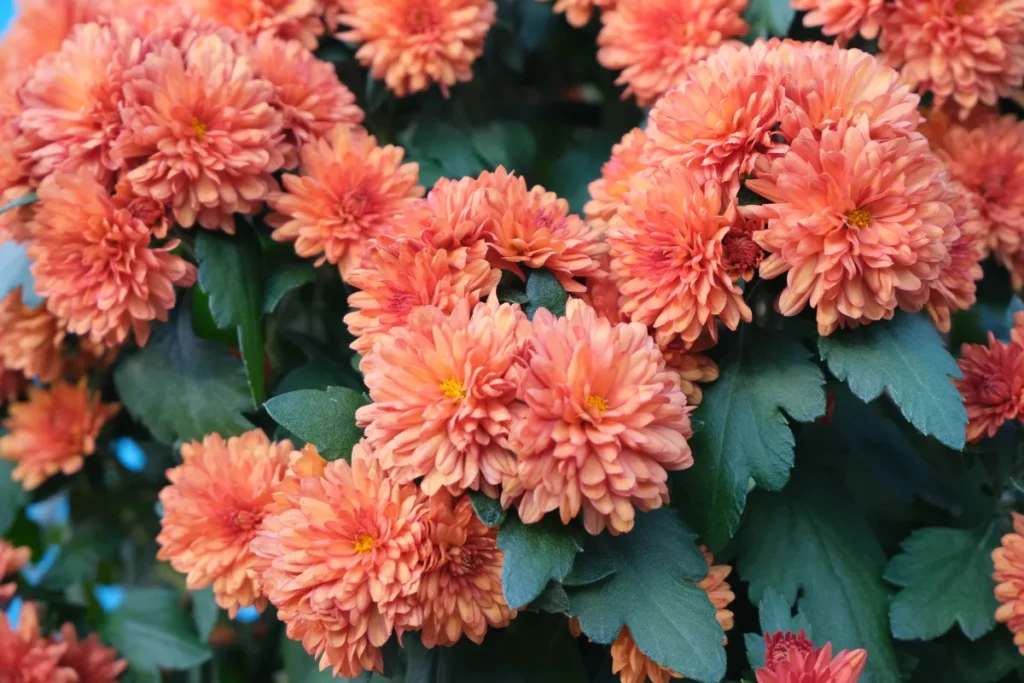
As summer fades, fall-blooming perennials take center stage, providing color and interest when many other plants are winding down.
Consider these fall-bloomers:
Asters (Aster)
Asters produce masses of star-shaped flowers in shades of purple, blue, pink, and white. They are essential for late-season color and attract bees and butterflies.
Sedum (Sedum spectabile)
Sedums, or stonecrops, are succulent plants with fleshy leaves and clusters of pink, red, or white flowers. They are drought-tolerant and add texture to the fall garden.
Chrysanthemums (Chrysanthemum)
Chrysanthemums, or mums, are quintessential fall flowers.
They come in a wide range of colors and forms, providing a burst of color as the growing season winds down.
Japanese Anemones (Anemone hupehensis)
Japanese Anemones feature delicate, cup-shaped flowers in shades of pink and white.
They thrive in partial shade and add a touch of elegance to fall gardens.
Goldenrod (Solidago)
Goldenrod produces bright yellow plumes that light up the fall landscape.
It is a robust plant that attracts pollinators and is often mistakenly blamed for causing hay fever (which is actually caused by ragweed).
Winter-Interest Perennials
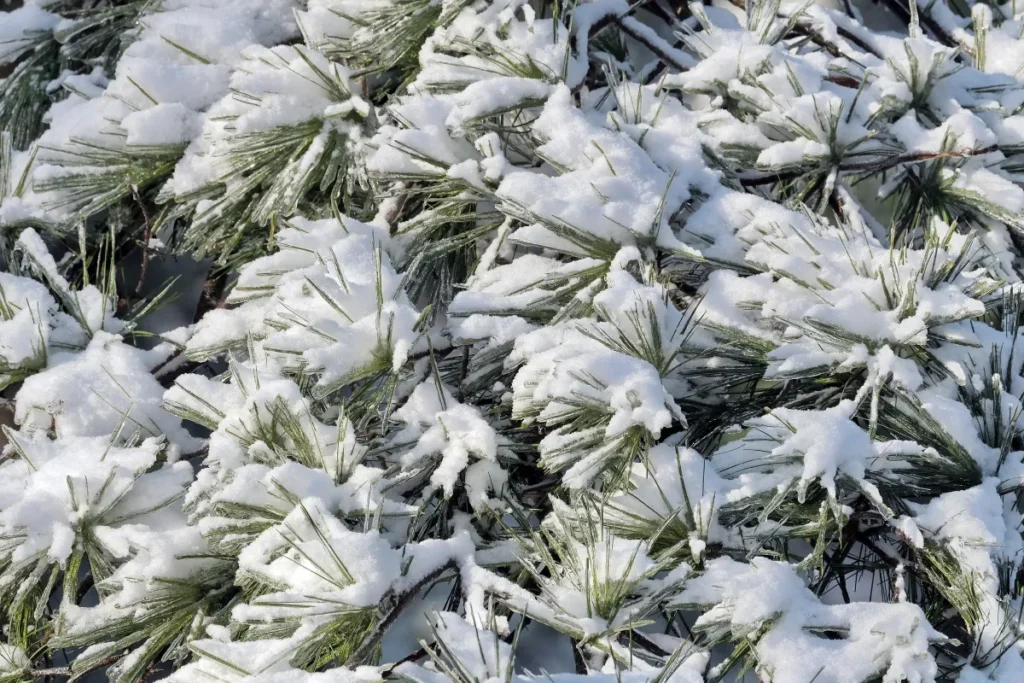
While winter may not be known for its floral display, some perennials can provide structure, color, and interest during the cold months:
Hellebores (Helleborus)
Hellebores, or Christmas roses, bloom in late winter to early spring.
Their nodding flowers come in shades of white, pink, purple, and green, adding a touch of color to winter gardens.
Snowdrops (Galanthus)
Snowdrops are among the earliest bloomers, often pushing through the snow to herald the arrival of spring.
Their delicate, white flowers are a welcome sight in late winter.
Winterberry (Ilex verticillata)
Winterberry is a deciduous holly with bright red berries that persist through winter, providing color and food for birds.
It is an excellent choice for winter interest in the garden.
Heuchera (Heuchera)
Heucheras, or coral bells, have attractive foliage that remains colorful throughout the year.
Their leaves come in shades of green, burgundy, purple, and silver, adding texture and color to winter gardens.
Evergreen Ferns
Evergreen ferns, such as the Christmas fern (Polystichum acrostichoides), provide year-round greenery and texture.
They thrive in shaded areas and add a lush, forest-like feel to the garden.
Tips for Growing Perennials

To ensure your perennials thrive, consider these general tips:
Soil Preparation
Prepare the soil by adding organic matter, such as compost, to improve drainage and fertility.
Most perennials prefer well-drained soil.
Proper Planting
Plant perennials at the correct depth, usually at the same depth they were in their pots.
Water them well after planting to help them establish roots.
Mulching
Apply a layer of mulch around your perennials to conserve moisture, suppress weeds, and regulate soil temperature.
Watering
Water perennials regularly, especially during dry spells. However, avoid overwatering, as this can lead to root rot.
Deadheading
Remove spent flowers to encourage more blooms and prevent the plants from self-seeding excessively.
Dividing
Many perennials benefit from division every few years to rejuvenate the plants and prevent overcrowding.
Fertilizing
Feed perennials with a balanced fertilizer in the spring and summer to promote healthy growth and blooming.
Conclusion
Perennial flowers are the backbone of any garden, providing reliable beauty and interest throughout the year.
By selecting perennials that bloom in different seasons, you can create a garden that is always full of color and life.
Whether you are a seasoned gardener or a beginner, incorporating these perennials into your garden will ensure a vibrant and dynamic landscape year-round.

